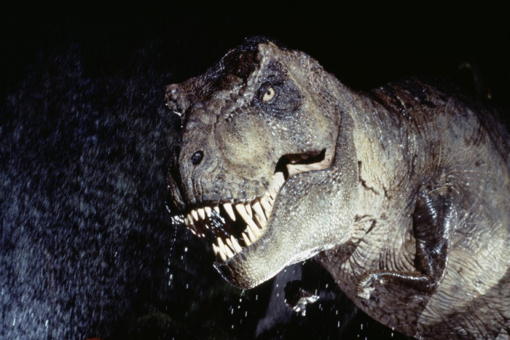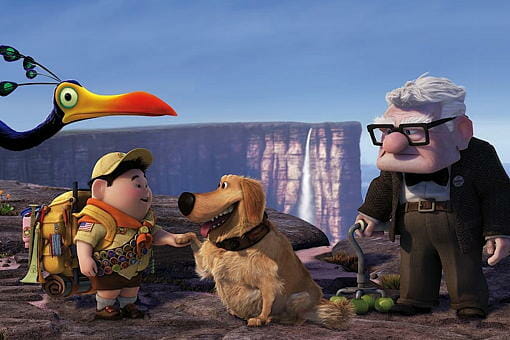By Ron Moskovitz · March 28, 2012

One concept a lot of writers struggle with is the idea of a dramatic midpoint. How does this differ from an act break? What does a midpoint mean, and what is it supposed to do?
The best way to illustrate what a midpoint is – and isn’t – is to use an example. One great example is Jurassic Park (directed by Steven Spielberg, written by Michael Crichton and David Koepp.) This movie is 120 minutes long from the first scene until the credits begin to role. At minute 63 we get our first sight of the T-Rex, with the claw on the sign of the no-longer-electrified fence.
What follows is one of the biggest set peices of the movie, the famous T-Rex battle. This is one good rule of midpoints: make it a big, memorable scene. But it goes deeper than that. To understand what else is happening, we need to look at the movie’s structure a little bit deeper.
The second act of Jurassic Park is about the trip Dr. Grant (Sam Neill) and the kids take around the park. It begins with them getting in the automated cars, and ends when they cross an about-to-be-electrified fence and return to the visitor’s center.
The T-Rex attack neatly divides this second act into two parts. In the first half, the obstacles are relatively soft – a sick dinosaur, animals that don’t show up when they’re supposed to, etc. After the T-Rex attack, it is about survival. The tension has been ramped up and while the goal is the same, the stakes have been significantly raised.
So let’s let this be a good functional definition of a midpoint: a major set piece that raises the stakes and intensifies the nature of the conflict.

Jaws (directed by Steven Spielberg, written by Peter Benchley and Carl Gottlieb) takes a similar approach. The movie is 122 minutes from opening image to beginning of credits, and at minute 62 we get the first warning that the shark is in the estuary, about to make an attack on Chief Brody’s (Roy Shieder’s) son.
Just like in Jurassic Park, we get the first clear view of a primary antagonist here, when the shark eats the helpful boater. Notice what else happens here: Brody has spent the second act battling the shark. However, in the first half of the second act, he is deferential to the townspeople and mayor. He takes half measures, and let’s himself be pushed around.
After the midpoint, however, he takes charge. He bullies the mayor into letting him hire Quint (Robert Shaw), and insists on taking the voyage out to hunt the shark himself. So again we see that the midpoint takes the same basic question (battling the shark) and ups the stakes – this time by making it more personal and by changing Brody’s relationship to the struggle.

Not is this limited to Spielberg movies. In Pixar’s Up, (directed by Pete Docter and Brad Peterson, written by those two with Thomas McCarthy) the second act is defined by Carl Fredrickson’s (voice of Ed Asner) attempt to get his house to paradise falls.
In the first half of the second act, the focus is on moving the house and dealing with natural obstacles: Fredrickson and Russell (voice of Jordan Nagai) have to steer the house through a storm, navigate it to South America, land it safely, and drag it across the mountainside while being distracted by Kevin (the bird) and Doug (the golden retriever, voiced by Bob Peterson).
However, at the midpoint they are captured by dogs and brought before Charles Muntz (voice of Christopher Plummer). In the second half of the second act, Fredrickson is still trying to bring his house to the top of the falls, but now he’s in a life-or-death struggle against Muntz and his dogs, and trying to save Kevin’s life. The tense scene where Fredrickson and Russell are captured and brought to Muntz’s lair serves as the midpoint, and dramatically raises the tension by changing the nature of the struggle.
Not all movies have clear dramatic midpoints, but it’s a useful tool to help you ramp up the stakes of your movie. It can help you structure your second act and make sure the stakes are always rising. Experiment with it in your own stories, and see what you discover!